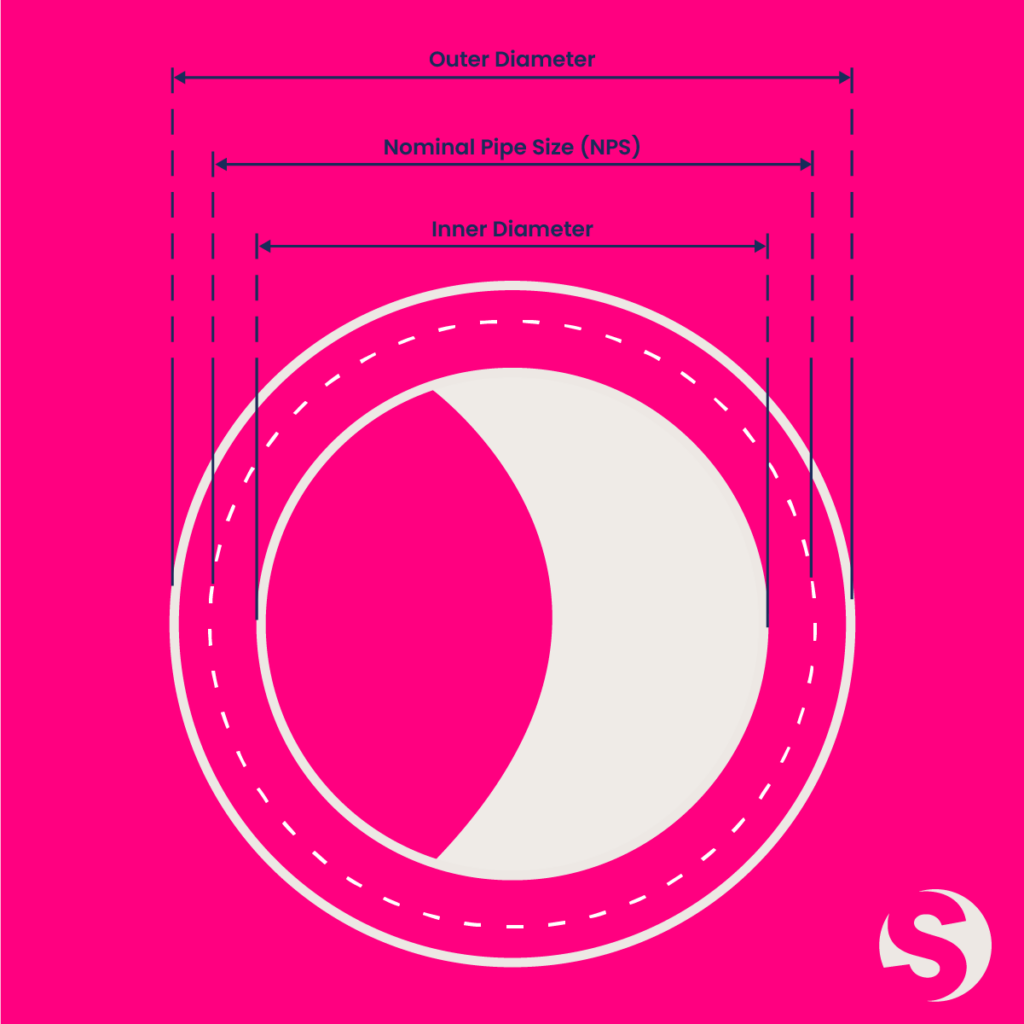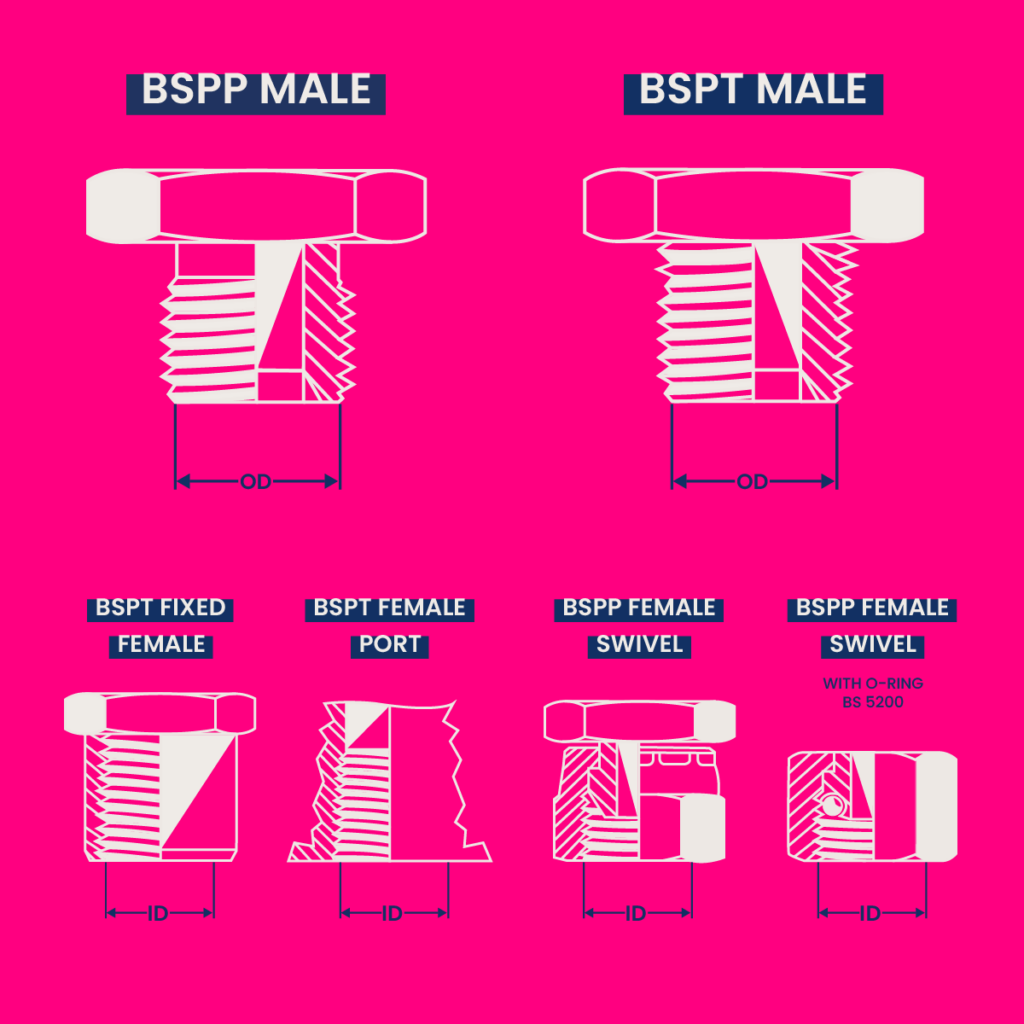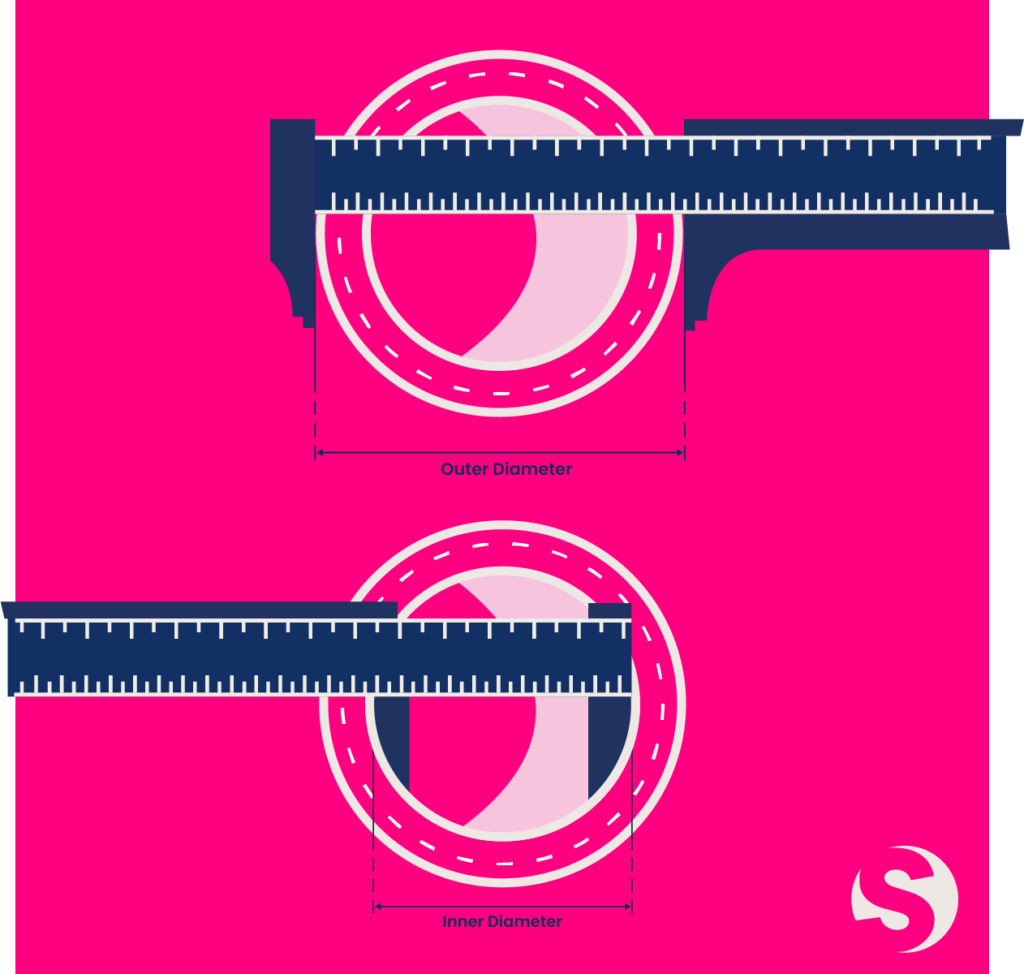Getting the right pipe size for your next project can be quite tricky. There’s plenty of jargon when it comes to pipe sizes in the UK. And with all those abbreviations, such as OD, DN and BSPT, it can be quite impenetrable!
What’s worse:
UK and European terms like ‘nominal diameter’ are often used alongside North American ones like ‘nominal bore’, which only adds to the confusion.
So, what is the nomenclature of pipe size?
Since that’s a question many of our customers tend to ask on a regular basis, at Plumbing Superstore, we decided to put together a comprehensive guide to pipe size terminology.
Without further ado, let’s dive right in.
Table of contents:
- Length
- Outside Diameter
- Inside Diameter
- Nominal Diameter
- British Standard Pipe
- British Standard Pipe Taper and British Standard Pipe Parallel threads
- Nominal Pipe Size
- How to measure pipe diameter
- Understanding pipe size terminology
Length
Before we get to the more convoluted terms, let’s take care of the more straightforward ones. As you’d expect, pipe length refers to the physical measurement of the length of a pipe measured in metres.
Knowing the exact pipe length you need is important not just for the obvious installation, maintenance and repair purposes but also for regulation compliance and flow efficiency.
Outside Diameter

Also known as outer diameter, the outside diameter (OD) of a pipe refers to the measurement of the outer or external surface of a cylindrical pipe. Basically, it’s the distance across the widest point of the pipe, passing through the centre.
The outside diameter is an important measurement because it’s used to determine the size and compatibility of pipes and their associated fittings, connectors and components across various plumbing applications.
Inside Diameter
The inside diameter (ID), also known as the inner diameter, is the measurement of the diameter of the hollow, cylindrical space inside the pipe. It’s the distance across the widest point of the interior opening of the pipe, often measured from one inner edge to the opposite inner edge.
The inside diameter is an important measurement for several reasons:
- Flow capacity
- Fitting compatibility
- Material and thickness
Nominal Diameter
The nominal diameter (usually abbreviated as DN, from the French diamètre nominal) is a standard system used to specify the size of pipes and pipe fittings in the UK and Europe.
Unlike its North American counterpart, DN is based on the metric system. Using millimetres to denote pipe sizes, it provides a consistent way to designate the size of pipes and components.
In the DN system, the nominal diameter of a pipe is equal to the approximate inside diameter (ID) of the pipe in millimetres.
Here’s a quick example of two common DN pipe sizes:
- DN25 corresponds to a pipe with an approximate inside diameter of 25mm.
- DN50 corresponds to a pipe with an approximate inside diameter of 50mm.
The DN system simplifies pipe sizing and compatibility. It allows for a standardised and precise way to specify and select pipes and fittings, ensuring that components from different manufacturers and sources can be reliably interconnected.
British Standard Pipe
British Standard Pipe (BSP) is a set of technical standards used for pipe threads and fittings in the UK and many other countries, particularly those in the Commonwealth of Nations. The BSP system is widely used in plumbing, hydraulics and various fluid transport systems. It provides a standardised way to connect and seal pipes and fittings.
Within the system, there are two common BSP thread options – parallel threads and taper threads.
What sets them apart?
That’s exactly what we’re going to look at next.
British Standard Pipe Taper and British Standard Pipe Parallel threads

As their name suggests, British Standard Pipe Taper (BSPT) threads have a taper or cone shape, with a taper of 1 in 16. The angle of the taper is 55°. Designed to create a tight seal when engaged, they rely on the tapered threads to form a pressure-tight joint.
As the threads are tightened, they compress and create a seal, making BSPT suitable for applications where a pressure-tight joint is essential, such as water and gas plumbing.
Next:
British Standard Pipe Parallel (BSPP) threads have a parallel thread design, which means the threads maintain a consistent diameter throughout their length. The thread angle is 55°, the same as in BSPT threads. They’re often used in conjunction with O-rings or gaskets to create a reliable seal.
BSPP threads are suitable for applications where a pressure-tight connection is not necessary but where a secure and leak-resistant connection is required. They’re commonly found in hydraulic and pneumatic systems.
But wait – there’s more!
Both BSPT and BSPP threads can be combined to create two types of joints:
Jointing threads
These threads are designed to create a seal when engaged. BSPT threads can create a seal through the tapered threads which tighten and compress when threaded into a mating component.
In turn, BSPP threads create a seal by using O-rings, gaskets or other sealing components in combination with the parallel threads.
Long screw threads
With a longer engagement length, these threads are often found on bolts, screws or threaded rods and are designed for applications where a strong, secure connection is required.
Nominal Pipe Size
Nominal Pipe Size (NPS) is a standardised system used primarily in North America to designate the approximate size of a pipe or pipe fittings. It’s an important part of the ASME B36.10M and ASME B36.19M standards, which are widely followed in the US.
NPS uses a nominal size (often referred to as ‘nominal bore’ or NB for short, usually expressed as a whole number) to describe the approximate inside diameter of a pipe.
So far, so good right?
Well, this is where it gets a bit complicated.
The thing is:
This nominal size is actually unrelated to the actual dimensions or measurements of the pipe. Instead, it’s the ‘approximate’ internal diameter of the pipe. And while you may see DN and NPS used interchangeably, it’s absolutely crucial to point out that they are not the same!
What’s more:
Metric pipes aren’t covered by NPS specifications.
Key takeaway:
When in doubt which standard is being used in product specifications, always double- or even triple-check with the manufacturer.
How to measure pipe diameter

By this point, you should have a pretty clear idea that the pipe diameter is the most important measurement you’re going to need when choosing the right pipe size for your next project.
With that in mind, here’s how you can measure pipe diameters quickly and accurately.
You’re going to need a tape measure and a diameter-measuring tool appropriate for the size of the pipe, such as a calliper.
Start by locating a section of the pipe with a clear and accessible outer surface. If you’re measuring the outer diameter (OD), place the measuring tool or tape around the exterior of the pipe, ensuring it’s perpendicular to the pipe’s axis.
Next:
Carefully wrap the measuring tool around the pipe, ensuring it follows a straight path along the widest point. Take the measurement at a single point around the circumference of the pipe to get the most accurate OD reading.
If you’re measuring the inner diameter (ID), insert the measuring tool into the pipe until it touches the interior walls. Then, adjust it to fit snugly against the inner wall and proceed to take the measurement.
That’s it!
Bear in mind that it’s vital to ensure that your measurement is as accurate as possible, especially when dealing with precise applications.
Understanding pipe size terminology
Unless you’re a professional plumber, pipe size terminology can be difficult to tackle.
The good news is:
You have our handy guide to help you manage it!
And now that you can tell your nominal diameter from your nominal pipe size, you’re in good stead to choose the right pipes for your next home improvement project.



















